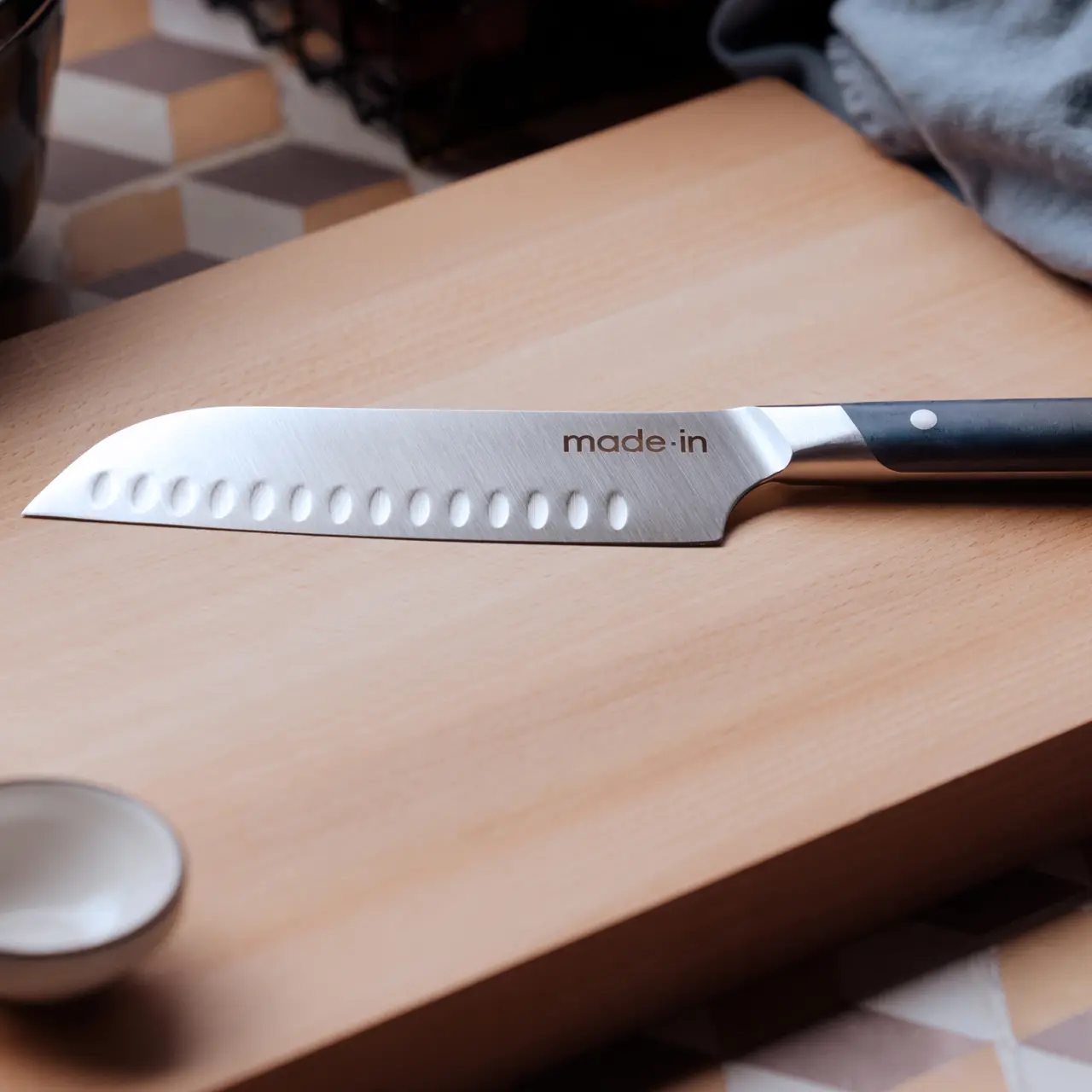Great dishes begin with the right ingredients and careful preparation,and having the right Knives in your kitchen can make all the difference in your meal prep. Both the Nakiri Knife and the Santoku Knife are popular kitchen staples. And while they may look somewhat similar at first glance, they actually differ greatly in their utility and application.
By having a better understanding of the differences between Nakiri and Santoku Knives, you can make better informed decisions when buying blades.
Nakiri Knives
The Nakiri Knife features a large, rectangular-shaped blade. This blade is thin and flat, providing a cutting edge that makes it ideal for slicing vegetables and working with other delicate ingredients, as it cuts straight down without rocking like other, curved blades.
Advantages of Nakiri Knives
There are many benefits of working with a Nakiri Knife in your kitchen, especially if you frequently cook with a lot of delicate ingredients like vegetables. These are foolproof Knives that are easy for even the most beginner chef to work with.
Lightweight DesignNakiri Knives are among the lightest Knives you'll find in your cutting block. Most are less than seven inches in length and weigh less than 9.5 ounces, so they're easy to work with even if you have smaller hands.
Minimal Skill RequiredThe Nakiri Knife is used to execute a single cut, which is done in a simple up-and-down motion thanks to the flat edge of its blade. As a result, there is minimal skill or experience required to use a Nakiri Knife safely and properly.
Considerations of Nakiri Knives
Though we’re of the belief that these Knives are essential components of any home chef’s Knife block, here are a few things to keep in mind if you're thinking about buying a Nakiri Knife for your kitchen.
Limited ApplicationsGenerally, Nakiri Knives are only used for slicing vegetables. If you don't work with a lot of vegetables or other delicate ingredients, you may want to look for a more versatile Knife with more applications than just one.
Santoku Knives

On the other hand, a Santoku Knife is characterized by its straight edge, pointed tip, fluted blade, and curved spine. Because of this design, the Santoku Knife has many practical uses, ranging from large-scale cuts, like chopping and mincing, to more delicate ones, like slicing and dicing.
Advantages of Santoku Knives
Since these Knives are so versatile, there are a number of different advantages to having this blade in your Knife block. Here are just a few reasons why we think this Knife is an essential for any home or professional chef.
VersatilityBecause of the design of the Santoku Knife, it can be used to cut many different ingredients in many different ways. From cutting vegetables and fruits to carving meats, you have many options for what you can use your Santoku Knife for.
DurabilityThe thicker blade and spine on the Santoku Knife makes it a more durable and stronger blade than others.. The Santoku Knife can handle cutting through tough meats and similar ingredients without chipping, warping, or becoming damaged.
Considerations of Santoku Knives
We believe that these Knives are as essential to have as a Chef Knife, but much like any other Cookware purchase, there are some factors to be aware of before you purchase your own Santoku Knife.
More Skill RequiredBecause you can carry out many different cuts with a Santoku Knife, using one does tend to require a little more skill. With a Nakiri Knife, you slice in a straight up-and-down motion that doesn't require much skill or experience. A Santoku Knife can be used to cut, chop, mince, dice, and more—so you'll need to know what you're doing to use it safely.
Which One is Better?
At the end of the day, the Knife that's better for your needs will depend on your own personal preference. If you work with a lot of vegetables in your dishes, then you'll probably want to have a Nakiri Knife on hand for easy slicing. On the other hand, nothing beats the versatility and utility of a quality Santoku Knife for executing a wide range of cuts.
Ideally, you’ll keep both a Nakiri Knife and a Santoku Knife in your kitchen so that you can choose the one that's right for your exact dish.
Ready to Shop?
Both the Nakiri and Santoku Knife have their respective places in the kitchen, which means you’ll want to opt for a high-quality option. Luckily, we have you covered—all Made In Knives are full-tang and fully forged, from our seven-inch Santoku to our six-inch Nakiri.

























